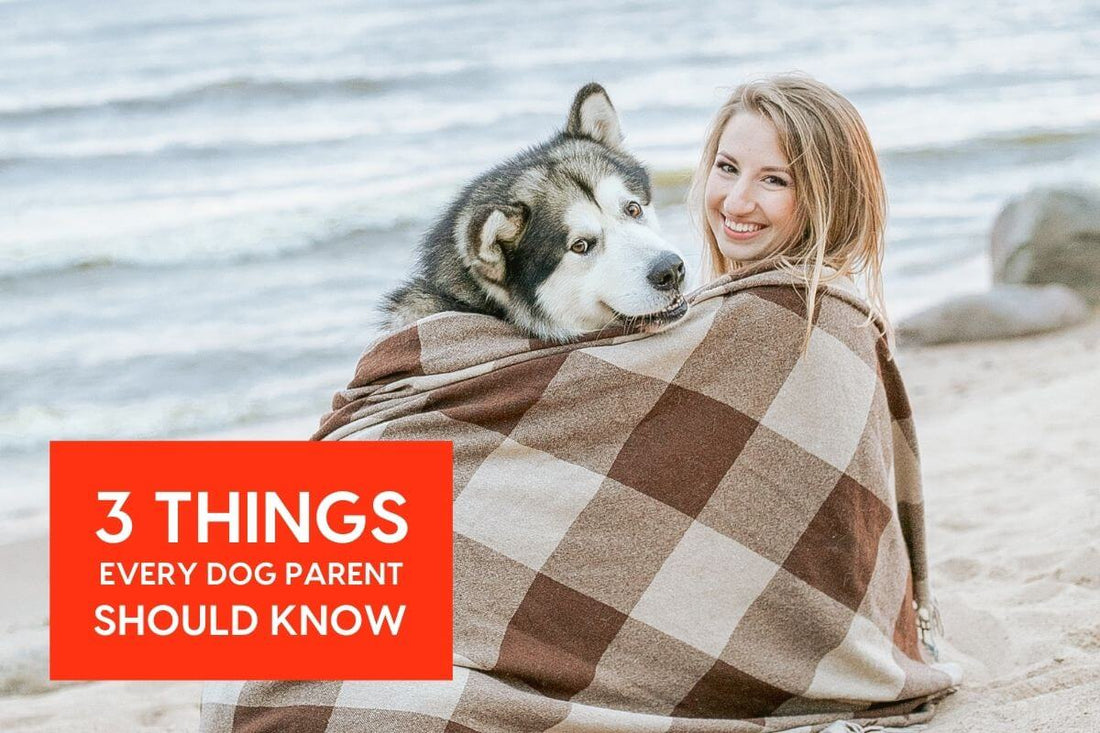3 Simple Things Every Dog Parent Should Know | Pupford
4 Comments Filed under pup parenting
The internet is exciting because there’s so much information out there. But the internet is also frustrating because, you guessed it, there’s so much information out there.
It’s so easy for dog parents to get overwhelmed.
A simple Google search for “how to train my dog” can sometimes leave you more confused than before. You see people who are great at training their dog and you feel like you’re not. Everything you read either doesn’t work for you or doesn’t sound… right.
Once you tune out the noise, you’ll see that anyone can learn to train their dogs successfully. You just have to start with the basics.
Today we’ll cover three simple things every dog parent should know when starting their dog training journey -- and the next steps to set you up for success.
1. UNDERSTAND HOW YOUR DOG LEARNS

Before you start teaching, take some time to understand how your dog learns. There are two main schools of thought when it comes to learning:
- Learning by consequence -- If I do X, then Y happens. So if I want Y, I should do X. If I don’t want Y, I should not do X.
- Example: When I “sit” I get a treat.
- Learning by association (Classical Conditioning/Pavlovian Conditioning) -- When X happens, then Y usually happens next. I can react to X in anticipation for Y.
- Example: When the doorbell rings, a visitor enters. So when the doorbell rings, I get excited in anticipation of the visitor.
Pay attention to both the consequences your dog receives and the associations they make. The learned associations especially will affect their behavior even if the stimulus itself isn’t inherently impactful. For example, the act of you picking up the leash isn’t impactful on its own, but it can still get your dog excited because they associate it with taking a walk.
Understanding how your dog learns can help you teach them. Establish strong associations from the start -- especially when it comes to the leash, their crate, going potty, etc.
2. USE YOUR DOG’S FOOD TO YOUR ADVANTAGE

The way to your dog’s heart is through their stomach ;)! Food is not the only tool you can use with your dog, but it is an important one.
Feeding your dog strengthens your relationship with them -- they’re learning to love and trust you as their caretaker and provider.
Pay attention to your dog’s surroundings when they’re eating. You may not realize it, but they’re forming important associations:
- Who is feeding them? Those are the people your dog will most likely trust and respond to.
- What is the feeding environment? Your dog will associate that environment with the positive act of eating. This is a great way to get your dog comfortable with their crate!
- When are you feeding them? If you feed them then leave the room, it may help them associate being alone with something positive.
- How are you feeding them? Using a work-for-eat toy like a snuffle mat or food-dispensing toy will get them to engage their brains and burn off energy.
Once you have a great food-based relationship with your dog, you’ll be able to utilize high-value dog treats as an effective training tool.
Make sure that you expose your dog to a variety of feeding associations. Have different family members take turns feeding your dog, feed your dog in a different room, in a kennel, etc.
3. FOCUS ON TRAINING ONE SIMPLE BEHAVIOR AT A TIME

Two of the biggest mistakes we see dog parents make during training are:
- Trying to teach too many behaviors at once
- Jumping right into a complicated behavior
The key is to focus on one simple behavior at a time.
Let’s look at an example: teaching dogs to use a potty bell.
Your instinct might be to jump right into trying to get your dog to associate the bell with going potty. While that will be an important step, you’ll want to start with one simple cue: touch.
Using positive reinforcement, you can teach your dog to touch a target with their nose or paw. Keeping it simple makes them feel accomplished and builds confidence.
You have plenty of time to challenge them down the road -- for now, keep it simple. Focus on building your relationship and setting the foundation with basic movements. Mastering “touch,” for example, will set you up for success with more advanced behaviors like the potty bell.
WHAT’S NEXT?
Keeping these three things in mind when you begin your dog training journey will help you sift through the clutter and give you a clear path to success.
But you’ll want to tackle this journey with the right tools. We recommend starting with a basic training pack that includes high-value treats, a long lead, and a tug toy.
If you’re looking for a little more guidance, tips for teaching specific behaviors, or video demonstrations, check out the Pupford Academy. Taught by certified dog trainers, the Pupford Academy will give you all the tools you need to master skills from crate and potty training through advanced tricks.
Remember, training your dog can be fun and anyone can do it! Just remember the tried-and-true acronym KISS -- Keep It Simple, Superstar!
